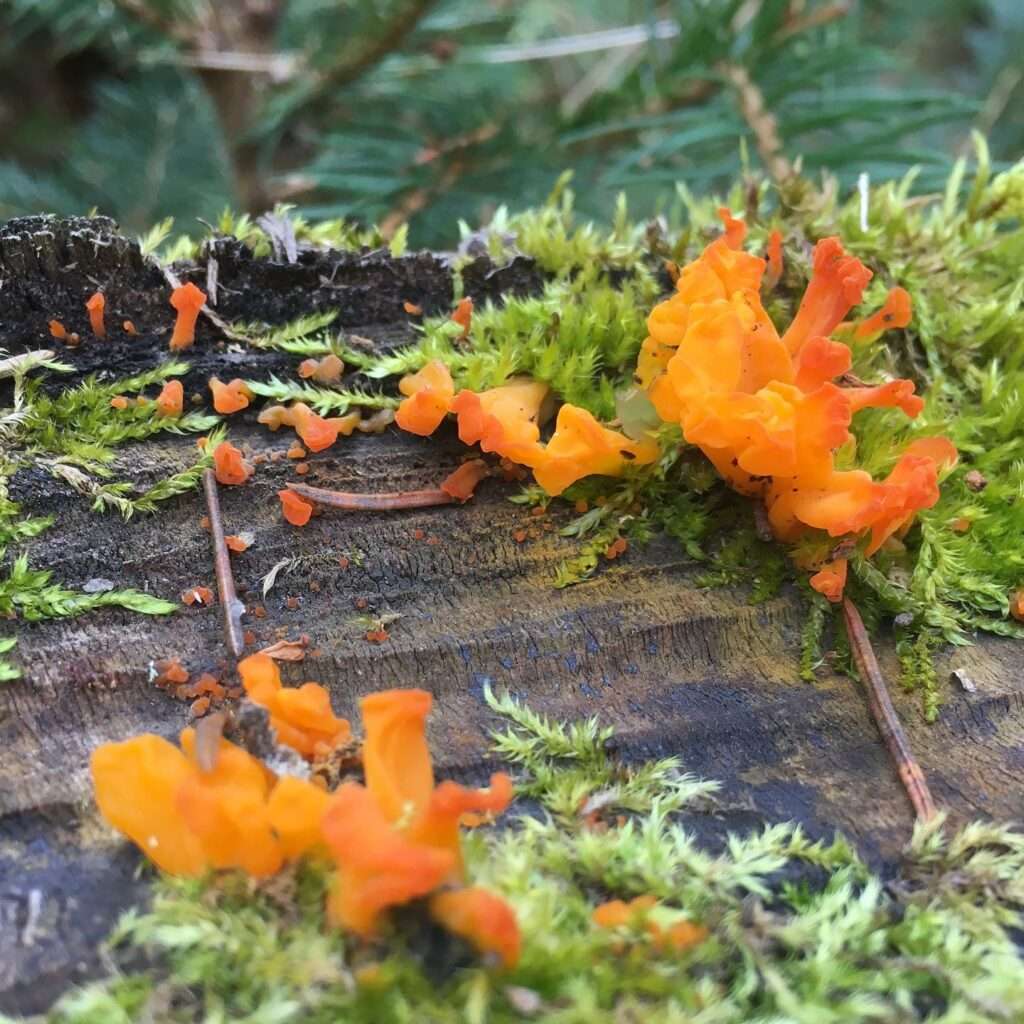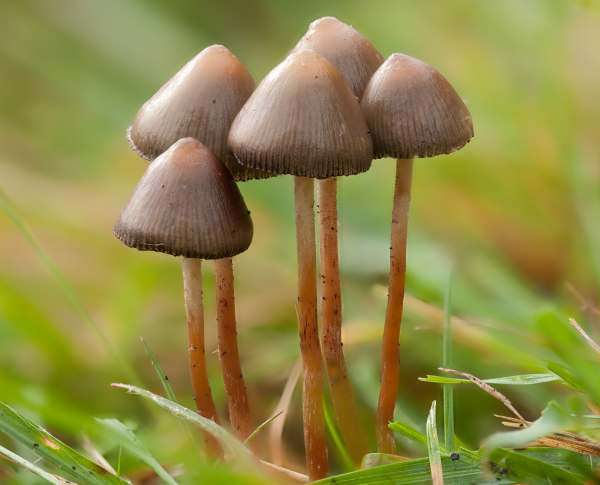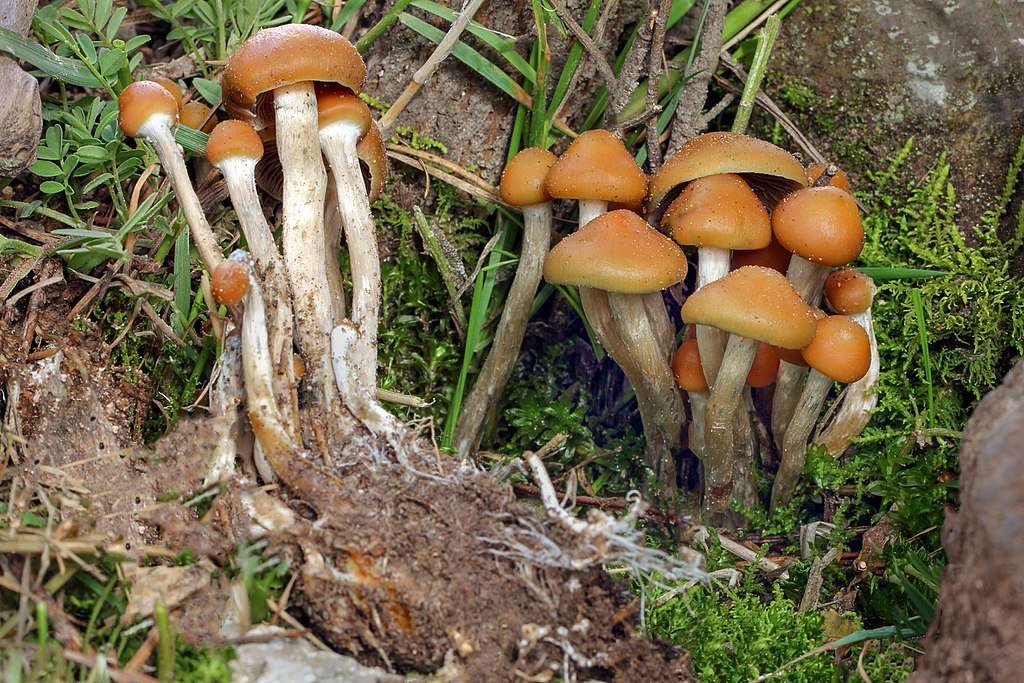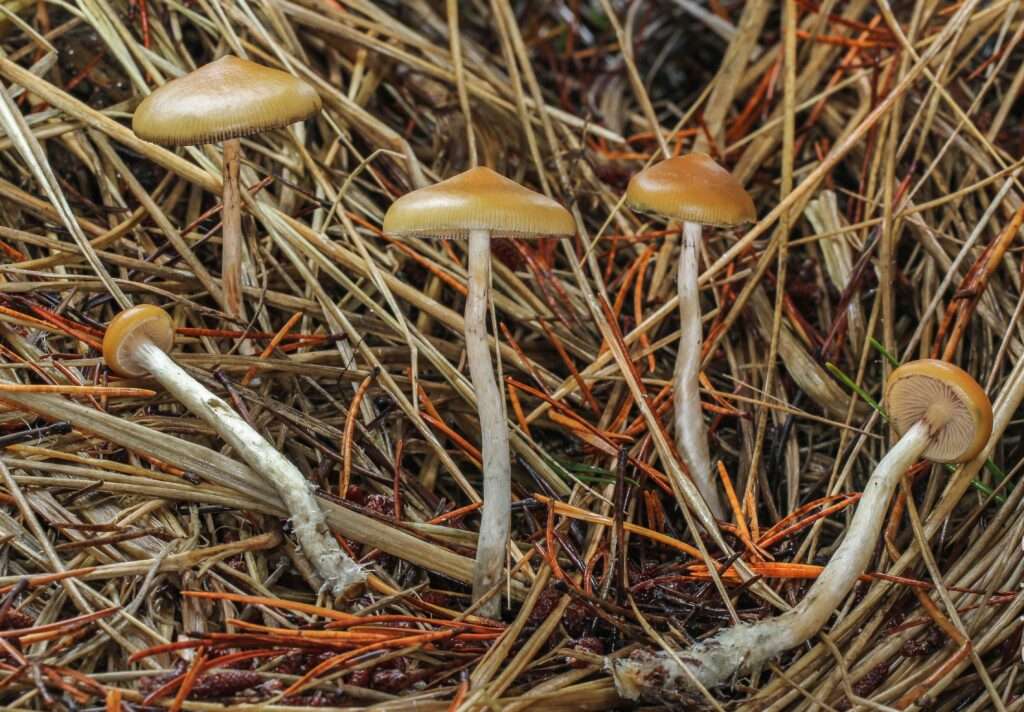
Scientific name
Dacrymyces palmatus
Description
Orange jelly mushroom has no distinguishable cap or stem, and no gills. The entire fruiting body, however, is a lump of solid, gelatinous tissue that resembles a brain or a lobed structure. Although dried specimens take on a reddish color, the exterior and inside would both be yellow or yellow-orange in appearance. The substrate connection is thin and clearly white. They are regularly observed in groups, frequently combining to create complex masses measuring up to 6 cm wide.
Dacrymyces palmatus shares the other popular name of “witches’ butter” with a number of closely related species. All known look-alikes are edible, thus there is no issue for casual enthusiasts despite the possibility of misunderstanding caused by the alternative scientific name, D. Chrysospermus.

Habitat
The saprobic nature of orange jelly fungus causes it to flourish on dead trees, primarily pine, whose bark has come off. It is found in North America and Europe. The fruit bodies can emerge at any time of the year during times of wet weather.
Uses/Importance
The orange jelly fungus apparently causes the tongue to tickle in a not-unpleasant way despite having almost no flavor. It has been suggested as a gourmet alternative for squid flesh, a dish with a distinct, enticing feel, due to its gelatinous but solid structure. Some individuals report favorable outcomes when putting it to soup or batter-frying the jelly or methods that emphasize on the texture while incorporating flavor from elsewhere. Orange jelly has its fans despite being practically tasteless and having a strange appearance. The species is supposed to be beneficial for lung diseases in folklore, however, there has been little to no scientific investigation on the matter.
Table





